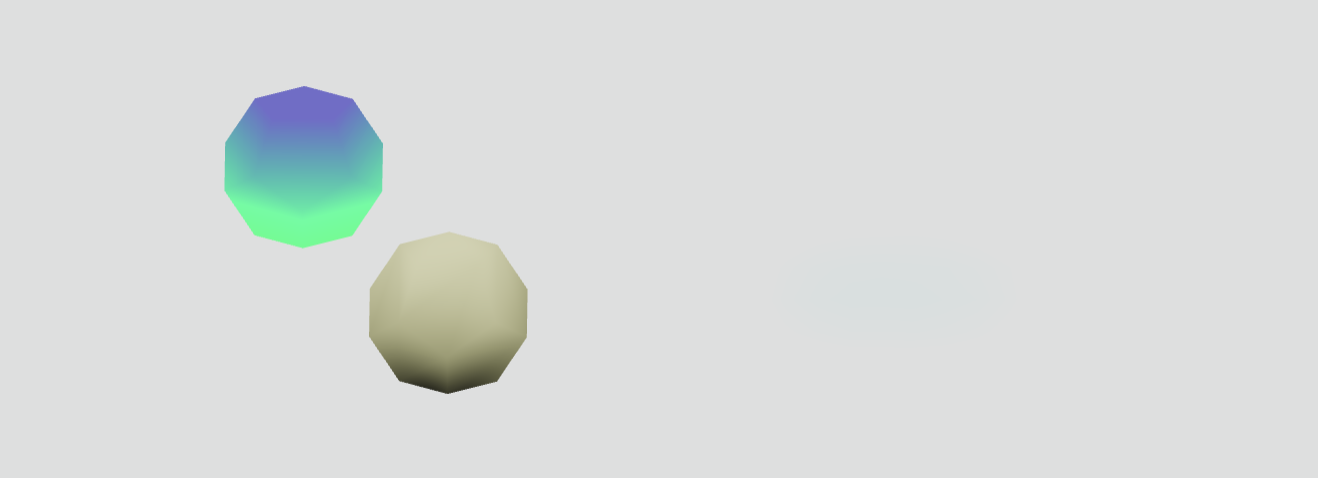Custom shader materials
Using Shared libraries and WLJS Functions one can define a custom vertex / fragment shaders to be used by Graphics3D primitives.
Adapted example from DEV.io
Javascript cell
.js
function vertexShader() {
return `
varying vec3 vUv;
void main() {
vUv = position;
vec4 modelViewPosition = modelViewMatrix * vec4(position, 1.0);
gl_Position = projectionMatrix * modelViewPosition;
}
`;
}
function fragmentShader() {
return `
uniform vec3 colorA;
uniform vec3 colorB;
varying vec3 vUv;
void main() {
gl_FragColor = vec4(mix(colorA, colorB, vUv.z), 1.0);
}
`;
}
let THREE;
interpretate.shared.THREE.load().then(() => {
THREE = interpretate.shared.THREE.THREE;
})
core.CustomMaterial = async (args, env) => {
let uniforms = {
colorB: {type: 'vec3', value: new THREE.Color(0xACB6E5)},
colorA: {type: 'vec3', value: new THREE.Color(0x74ebd5)}
}
return (function() {
return new THREE.ShaderMaterial({
uniforms: uniforms,
fragmentShader: fragmentShader(),
vertexShader: vertexShader(),
});
})
}
Now hook it up to some basic graphics primitives
WL cell
Graphics3D[{
Translate[PolyhedronData["Dodecahedron"][[1]]//N , {-2,-3,0}],
MeshMaterial[CustomMaterial[]],
Translate[PolyhedronData["Dodecahedron"][[1]]//N , {2,3,0}]
}]
